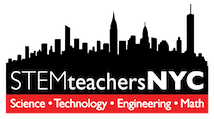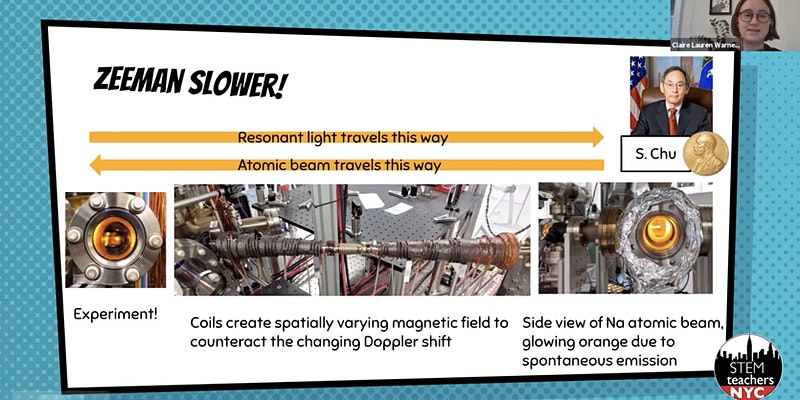Leaders: Claire Lauren Warner and Fernand Brunschwig
Format and Dates: One 2 Hour Session, 10/03/2021 (1:00-3:00pm EDT)
Description:
How do atoms and molecules interact? What makes them a liquid? A gas? A solid? Why do they sometimes act like superconductors? How do physicists measure their fundamental properties? How do modern atomic physicists cool atoms and molecules almost to absolute zero? What are the amazing quantum properties of matter revealed when it is cooled in modern atomic physics experiments?
This workshop will take teachers on a grand tour of modern atomic physics research. Claire Warner, a physics graduate student at Columbia University, will explain why laser cooling of atoms and molecules is a useful tool for reducing outside interactions and revealing fundamental quantum behavior. She will explain how laser cooling actually works in a way that is understandable to high school students. Claire will show how laser cooling is used in physics research and demonstrate her state of the art, table-top apparatus.
Participants will discuss her presentation and carry out guided step-by-step calculations that determine the key factors governing modern laser cooling experiments. The calculations will use only basic Bohr-model quantum concepts and Newtonian mechanics. Teachers will receive printed materials outlining the argument and calculations at a level appropriate for AP and other high school students interested in how modern physics research is actually carried out. Teachers will also get a copy of a 15 min. video usable with students in which Claire provides an overview of laser cooling and her apparatus.

